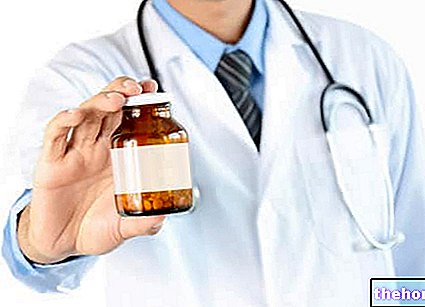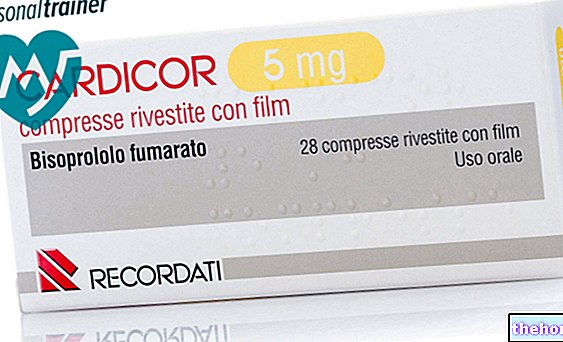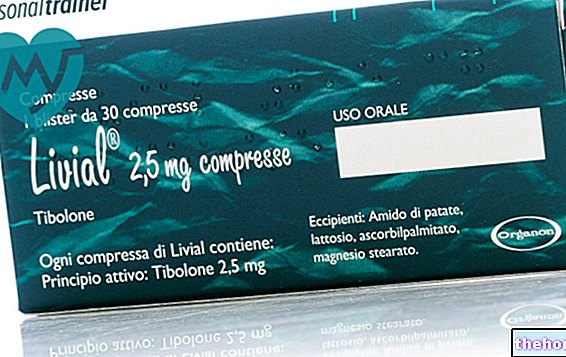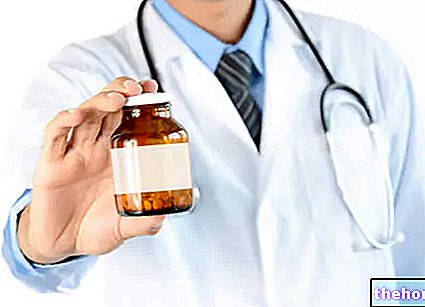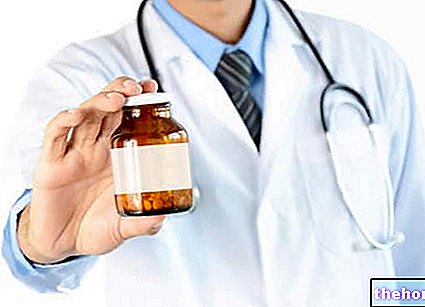Active ingredients: Clebopride
MOTILEX 0.5 mg tablets
MOTILEX 0.5 mg / 5ml syrup
MOTILEX 1 mg / 2 ml solution for injection
Why is Motilex used? What is it for?
Motilex contains the active substance clebopride which belongs to a class of medicines called 'prokinetics' which work by stimulating the motility of the stomach and intestines. Motilex is indicated for:
- the treatment of nausea and vomiting that occur due to problems with the stomach or intestines (organic or functional origin) or caused by medicines used to treat cancer;
- treating the symptoms of a disease that leads to stomach upset (functional dyspepsia);
- the exploration of the stomach and intestines by means of a radiological examination.
Contraindications When Motilex should not be used
Do not take Motilex
- If you are allergic to clebopride, other medicines similar to Motilex (benzamides) or any of the other ingredients of this medicine (listed in section 6).
- In cases where the stimulation of bowel emptying can be dangerous, for example in the presence of intense bleeding (haemorrhage), perforation, mechanical obstruction of the stomach and intestines.
- If you suffer from epilepsy.
- If you suffer from movement disorders (tardive dyskinesia) after being treated with medicines called 'neuroleptics' used for mental disorders.
- If you have been diagnosed with Parkinson's disease or other diseases of a part of the nervous system called "extrapyramidal" that regulates movement.
- If you are pregnant and breastfeeding (see "Pregnancy and breastfeeding").
Precautions for use What you need to know before taking Motilex
Talk to your doctor or pharmacist before taking Motilex.
Do not take doses of Motilex higher than those recommended by your doctor, as high doses may increase the possibility of reactions in the movement system (extrapyramidal reactions, see section 3 "If you take more Motilex than you should").
Your doctor will prescribe Motilex with particular care if you have breast cancer or a benign tumor in a gland of the brain (pituitary adenoma) which leads to the release of a hormone called "prolactin", because Motilex may lead to a further increase in the levels of this hormone.
Your doctor will prescribe Motilex with particular caution if you suffer from severe changes in the kidneys (kidney failure) and / or liver (liver failure), as the blood levels of clebopride may be higher or last longer.
Children and adolescents
In children and adolescents, taking doses of Motilex higher than those recommended by the doctor may further increase the possibility of reactions in the system that regulates movement (extrapyramidal reactions).
Interactions Which drugs or foods can modify the effect of Motilex
Other medicines and Motilex
Tell your doctor or pharmacist if you are taking, have recently taken or might take any other medicines.
The effects of Motilex may be affected or affect the following medicines.
- Medicines called "anti Mono Amino Oxidase" (anti MAO) used against depression, because it increases the risk of developing side effects.
- Medicines called "neuroleptics", used to treat mental disorders (phenothiazines, butyrophenones, thioxanthenes, etc.), because these medicines can increase the activity of Motilex in the nervous system and the risk of side effects.
- Digoxin (a medicine that acts on the contraction of the heart) and cimetidine (a medicine used for stomach injuries, "ulcers"), because Motilex may decrease the effect of these medicines.
The association between Motilex and the following medicines is to be avoided:
- Medicines used against pain called "narcotic analgesics" and medicines used to block the "action of a substance in the body called" acetylcholine "(anticholinergics), because these medicines counteract the effects of Motilex on the motility of the stomach and intestines.
- Other medicines that affect the release of a substance called 'dopamine'.
Motilex with food, drink and alcohol
Do not take Motilex with alcoholic beverages, as this medicine may increase the effects of alcohol such as sleepiness and decreased alertness.
Warnings It is important to know that:
Pregnancy, Lactation and Fertility
If you are pregnant or breast-feeding, think you may be pregnant or are planning to have a baby, ask your doctor or pharmacist for advice before taking this medicine.
Pregnancy
As sufficient data on the safety of use are not yet available, Motilex is contraindicated in pregnancy.
Feeding time
As sufficient data on the safety of use are not available to date, Motilex is contraindicated during breastfeeding.
Fertility
There are no data on fertility in humans.
Driving and using machines
Motilex affects your ability to drive or use machines, as it can cause drowsiness.
Please take this into account before driving a vehicle and / or if you carry out operations that require you to be alert.
Motilex tablets contain lactose
If you have been told by your doctor that you have "intolerance to some sugars, contact your doctor before taking this medicinal product.
Motilex syrup and Motilex solution for injection contain sorbitol
If you have been told by your doctor that you have "intolerance to some sugars, contact your doctor before taking this medicinal product.
Sorbitol can cause a weak laxative effect.
The caloric value of sorbitol is 2.6 Kcal / g
Dose, Method and Time of Administration How to use Motilex: Posology
Always take this medicine exactly as your doctor or pharmacist has told you. If in doubt, consult your doctor or pharmacist.
Use in adults
The recommended dose is:
- Motilex tablets: 1 tablet 3 times a day before meals
- Motilex syrup: 1 scoop of 5 ml 3 times a day before meals
- Motilex solution for injection: half or 1 ampoule for injection into a muscle (intramuscular route) or a vein (intravenous route), during the acute phase. If necessary it is possible to repeat the dose.
Use in children and adolescents
- Motilex tablets
Adolescents (12 to 20 years): half a tablet 3 times a day (before meals)
- Motilex syrup:
Teenagers (12 to 20 years): half a scoop (2.5 ml) 3 times a day before meals
Children: as a general rule 15 mcg per kg of body weight per day, divided into 3 administrations.
Indicatively (1 ml = 100 mcg):
Children from 1 to 4 years: 0.5 ml 3 times a day
Children from 4 to 8 years: 1 ml 3 times a day
Children from 8 to 10 years: 1.5 ml 3 times a day
Children from 10 to 12 years: 2 ml 3 times a day
Overdose What to do if you have taken too much Motilex
If you take more Motilex than you should
If you have taken too much Motilex, notify your doctor immediately or go to the nearest hospital.
Taking too much Motilex can cause drowsiness, disorientation and movement disorders, which usually disappear with discontinuation of therapy. If symptoms persist, your doctor or healthcare professional will decide which treatments you should undergo.
In case of phenomena that affect movement (extrapyramidal effects), your doctor or healthcare professionals will give you medicines that will block these effects (medicines against Parkinson's, medicines that block acetylcholine or medicines against allergies with the ability to block a substance in the body called "acetylcholine").
If you forget to take Motilex
Do not take a double dose to make up for a forgotten dose.
If you have any further questions on the use of this medicine, ask your doctor or pharmacist.
Side Effects What are the side effects of Motilex
Like all medicines, this medicine can cause side effects, although not everybody gets them.
Rare (may affect up to 1 in 1000 people):
- movement disorders (dystonia) usually in the neck, tongue or face,
- motor disorders (dyskinesia and tardive dyskinesia especially in the elderly and after long periods of treatment), tremor,
- drowsiness,
- sedation.
Very rare (may affect up to 1 in 10,000 people):
- excessive production of the hormone prolactin (hyperprolactinaemia),
- abnormal production of breast milk (galactorrhea),
- disappearance of the menstrual cycle (amenorrhea),
- breast growth in men (gynecomastia),
- problems with erection (erectile dysfunction).
Compliance with the instructions given in this leaflet reduces the risk of undesirable effects.
Reporting of side effects
If you get any side effects, talk to your doctor or pharmacist. This includes any possible side effects not listed in this leaflet. You can also report side effects directly via the national reporting system at https://www.aifa.gov.it/content/segnalazioni-reazioni-avverse.
By reporting side effects you can help provide more information on the safety of this medicine.
Expiry and Retention
Motilex tablets: store in a dry place.
Keep this medicine out of the sight and reach of children
Do not use this medicine after the expiry date which is stated on the carton after "EXP". The expiry date refers to the last day of that month and to the product in intact packaging, correctly stored.
Do not throw any medicines via wastewater or household waste. Ask your pharmacist how to throw away medicines you no longer use. This will help protect the environment.
Composition and pharmaceutical form
What it contains
Motilex 0.5 mg tablets:
- The active ingredient is: acid malate clebopride. One tablet contains 0.68 mg of clebopride malate acid equal to 0.50 mg of clebopride base.
- The other ingredients are: lactose, microgranular cellulose, silicon dioxide, povidone, sodium carboxymethyl starch, magnesium stearate.
Motilex 0.5 mg / 5 ml syrup:
- The active ingredient is: acid malate clebopride. 1 ml of syrup contains 0.136 mg of clebopride malate acid (equal to 0.10 mg of clebopride base).
- The other ingredients are: sorbitol solution, propylene glycol, benzoic acid, raspberry flavor, purified water.
Motilex 1 mg / 2ml solution for injection
- The active ingredient is: acid malate clebopride. One 2 ml vial contains: 1.36 mg of clebopride malate acid (equivalent to 1.0 mg of clebopride base).
- The other ingredients are: sorbitol, water for injections.
Description of what Motilex looks like and contents of the pack
Motilex comes in the form of tablets, syrup and solution for injection in the packages listed below:
Motilex tablets: box of 30 tablets
Motilex Syrup: 120 ml bottle
Motilex Solution for injection: box of 6 ampoules of 2 ml
Source Package Leaflet: AIFA (Italian Medicines Agency). Content published in January 2016. The information present may not be up-to-date.
To have access to the most up-to-date version, it is advisable to access the AIFA (Italian Medicines Agency) website. Disclaimer and useful information.
01.0 NAME OF THE MEDICINAL PRODUCT
MOTILEX
02.0 QUALITATIVE AND QUANTITATIVE COMPOSITION
MOTILEX 0.5 mg tablets
Each tablet contains:
Clebopride malate acid 0.68 mg
equal to clebopride base 0.50 mg
MOTILEX 0.5 mg / 5ml syrup
Each ml of syrup contains:
Clebopride malate acid 0.136 mg
equal to clebopride base 0.10 mg
MOTILEX 1mg / 2ml solution for injection
Each 2 ml vial contains:
Clebopride malate acid 1.36 mg
equal to 1 mg clebopride base
For the full list of excipients, see section 6.1
03.0 PHARMACEUTICAL FORM
Tablets
Syrup
Injectable solution
04.0 CLINICAL INFORMATION
04.1 Therapeutic indications
Symptomatic treatment of nausea and vomiting of organic or functional origin or during antineoplastic chemotherapy.
Symptomatic treatment of functional dyspepsia.
Radiological exploration of the gastrointestinal tract.
04.2 Posology and method of administration
Motilex tablets
Adults
1 tablet 3 times a day (before meals)
Teenagers (12 to 20 years old)
½ tablet 3 times a day (before meals)
Motilex syrup
Adults
1 scoop of 5 ml 3 times a day (before meals)
Teenagers (12 to 20 years old)
½ scoop (2.5 ml) 3 times a day (before meals)
Children
as a general rule 15 mcg per kg of body weight per day, divided into 3 doses
Indicatively (1 ml = 100 mcg):
from 1 to 4 years: 0.5 ml 3 times a day
from 4 to 8 years: 1 ml 3 times a day
8 to 10 years: 1.5 ml 3 times a day
from 10 to 12 years: 2 ml 3 times a day
MOTILEX solution for injection:
Adults
½-1 ampoule, intramuscularly or intravenously, during the acute phase. If necessary it is possible to repeat the dose.
04.3 Contraindications
Hypersensitivity to the active substance, to other benzamides or to any of the excipients.
Cases in which the stimulation of intestinal motility can be dangerous, for example in the presence of gastrointestinal haemorrhage, perforation, mechanical obstruction.
Epilepsy
Patients with a history of neuroleptic tardive dyskinesia.
Parkinson's disease and other extrapyramidal affections.
Pregnancy and lactation (see section 4.6)
04.4 Special warnings and appropriate precautions for use
Doses higher than those recommended may increase the possibility of extrapyramidal reactions, especially in children and adolescents.
Particular caution should be adopted in the treatment of subjects with severe renal and / or hepatic insufficiency in whom the blood levels of clebopride may be higher or longer.
The possible increase in prolactin levels should be carefully considered, particularly in patients with breast cancer or prolactin-secreting pituitary adenoma.
Cases of acquired methaemoglobinaemia due to orthopramides (benzamides) have been reported in neonates.
Warnings on excipients
MOTILEX syrup and MOTILEX solution for injection contain sorbitol: patients with rare hereditary problems of fructose intolerance should not take this medicine. A mild laxative effect may occur because they contain sorbitol. MOTILEX syrup contains 2,125 g of sorbitol per 2.5 mL dose. The caloric value of sorbitol is 2.6 Kcal / g.
MOTILEX tablets contain lactose: patients with rare hereditary problems of galactose intolerance, lactase deficiency or glucose-galactose malabsorption should not take this medicine.
04.5 Interactions with other medicinal products and other forms of interaction
MOTILEX should not be taken with narcotic analgesic drugs or with anticholinergics that antagonize their effects on gastrointestinal motility.
The simultaneous use of Motilex with other drugs active on dopaminergic receptors, with anticholinergics should be avoided.
The concomitant administration of anti MAO increases the risk of undesirable effects.
The simultaneous administration of neuroleptics (phenothiazines, butyrophenones, thioxanthenes, etc.), drugs which in themselves can cause both the appearance of extrapyramidal symptoms and dystonic reactions, enhances the central activity of clebopride and increases the risk of undesirable effects.
Motilex decreases the effect of digoxin and cimetidine.
Clebopride can potentiate the sedative effects of alcohol, hypnotics, anxiolytics and narcotics.
04.6 Pregnancy and lactation
Fertility
There are no data on fertility in humans following the use of clebopride.
Pregnancy
Limited data are available from the use of clebopride in pregnancy. Reproductive toxicity studies in animals indicate no direct relationship or indirect harmful effects. As a precautionary measure, it is preferable to avoid the use of clebopride in pregnancy, especially in the first three months.
Feeding time
It is not known whether clebopride is excreted in breast milk and if it can have any impact on the unborn baby. As a precautionary measure, it is preferable to avoid the use of clebopride while breastfeeding.
04.7 Effects on ability to drive and use machines
As the product may cause drowsiness, MOTILEX impairs the ability to drive or use machines.
Motor vehicle drivers and those carrying out operations requiring supervisory integrity must be warned of this.
04.8 Undesirable effects
Adverse reactions reported during clinical trials and post-registration experience are grouped below by systemic and organ class (SOC) and by frequency (common 1-10%, uncommon 0.1-1%, rare 0.01-0.1%, very rare / isolated reports
Nervous system disorders:
Rare: extrapyramidal disorders, dystonia, dyskinesia, tremor, somnolence, sedation and tardive dyskinesia.
Endocrine pathologies:
Very rare: hyperprolactinaemia
Diseases of the reproductive system and breast :
Very rare: galactorrhea, amenorrhea, gynaecomastia and erectile dysfunction.
Dystonias are most commonly reported in the neck, tongue or face.
Tardive dyskinesia has been reported in elderly patients following prolonged treatments.
Hyperprolactinaemia, breast tenderness, galactorrhea, amenorrhea, gynaecomastia and impotence have been reported after prolonged treatments.
Reporting of suspected adverse reactions.
Reporting of suspected adverse reactions occurring after authorization of the medicinal product is important as it allows continuous monitoring of the benefit / risk balance of the medicinal product. Healthcare professionals are asked to report any suspected adverse reactions via the national reporting system. "address" www.agenziafarmaco.gov.it/it/responsabili ".
04.9 Overdose
No cases of intoxication have been recognized so far at the recommended doses. The overdose can cause drowsiness, disorientation and extrapyramidal disorders, which usually disappear with the interruption of therapy. If the symptoms persist, the treatments of choice are gastric lavage and symptomatic therapy. the use of an antiparkinsonian drug, anticholinergics or antihistamines with anticholinergic properties is recommended.
05.0 PHARMACOLOGICAL PROPERTIES
05.1 Pharmacodynamic properties
Pharmacotherapeutic group: prokinetics
ATC code: A03FA06
Clebopride, belonging to the group of orthopramides (substituted benzamides), has the ability to increase the tone and amplitude of gastric contractions, to release the pyloric sphincter and the duodenal bulb, to coordinate the peristalsis of the duodenum and jejunum through a " selective blocking action, of different intensity according to the districts, of populations of dopaminergic receptors (dopaminergic receptors of the gastrointestinal tract, of the chemoreceptor trigger zonee and of the mesolimbic system), associated with a proserotoninergic action at the level of the gastrointestinal tract. The main effect, therefore, in addition to a marked antiemetic activity, is to promote gastric emptying and to accelerate the gastro-duodenal transit, which is primitively or secondarily slowed down.
Clebopride, thanks to its selectivity of action, has a reduction in undesirable effects at the level of the endocrine system (hyperprolactinemia) and the extrapyramidal system, typical of anti-dopaminergic drugs.
05.2 Pharmacokinetic properties
In tests in rats, rabbits, dogs and humans, clebopride is rapidly absorbed orally and is predominantly metabolised. In humans, elimination occurs largely by the faecal route.
The plasma half-life is 2.1-2.7 hours. The maximum rate of excretion of the product occurs in the first 2-3 hours. Intravenously, the clebopride concentration reaches its peak (15-30 mcg / ml) after 10 minutes and remains at therapeutically effective levels until the sixth-eighth hour.
05.3 Preclinical safety data
Both in clinical studies and in post-marketing experience, with regard to the incidence of adverse reactions, MOTILEX has an adequate safety profile thus confirming the good tolerability demonstrated in the wide range of preclinical toxicology studies.
The LD50 could not be determined in rats and mice.
The administration of high doses of clebopride in chronic toxicity studies in both rats and dogs caused effects related to exaggerated pharmacological responses of dopaminergic receptor blockade.
Teratogenicity studies with clebopride conducted in rats and rabbits did not demonstrate any teratogenic potential.
Furthermore, Clebopride did not show mutagenic potential, by means of the Ames test, in the strains studied.
06.0 PHARMACEUTICAL INFORMATION
06.1 Excipients
MOTILEX 0.50 mg tablets: lactose, microgranular cellulose, silicon dioxide, povidone, sodium carboxymethyl starch, magnesium stearate.
MOTILEX 0.50 mg / 5 ml syrup: sorbitol solution, propylene glycol, benzoic acid, raspberry flavor, purified water
MOTILEX 1 mg / 2 ml solution for injection: sorbitol, water for injections
06.2 Incompatibility
None.
06.3 Period of validity
3 years
06.4 Special precautions for storage
Tablets: To be kept in a dry place.
06.5 Nature of the immediate packaging and contents of the package
Tablets: box of 30 tablets
Syrup: 120 ml bottle
Vials: box of 6 vials of 2 ml
06.6 Instructions for use and handling
No special instructions
07.0 MARKETING AUTHORIZATION HOLDER
Almirall S.p.A. - Via Messina, 38 - Tower C - 20154 Milan
08.0 MARKETING AUTHORIZATION NUMBER
Tablets: AIC 026362020
Syrup: AIC 026362032
Vials: AIC 026362057
09.0 DATE OF FIRST AUTHORIZATION OR RENEWAL OF THE AUTHORIZATION
July 1986 / May 2000 / May 2005
10.0 DATE OF REVISION OF THE TEXT
AIFA Determination May 5, 2014

